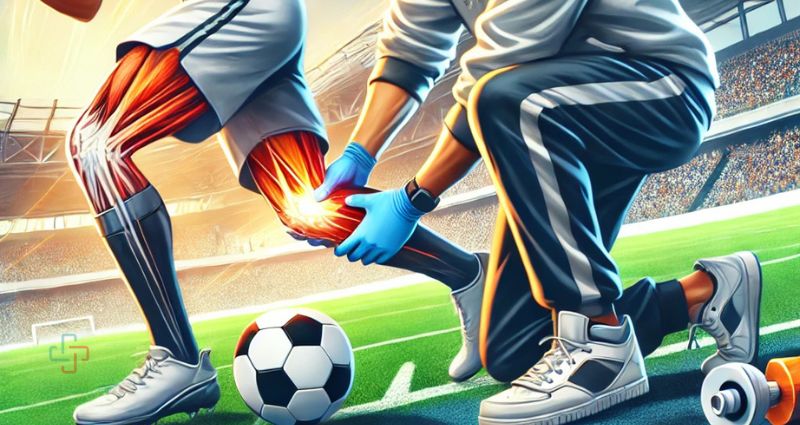The Most Common Sports Injuries and How to Avoid Them
The Most Common Sports Injuries and How to Avoid Them
Sports injuries like ankle sprains, shin splints, ACL tears, meniscus injuries, and tendonitis often result from overuse, improper training, or sudden movements. Ankle sprains occur due to ligament overstretching, while shin splints stem from excessive strain on the tibia. Knee injuries, including ligament tears and patellofemoral pain, are common in high-impact sports. Preventive measures include proper warm-ups, strength training, flexibility exercises, and using protective gear. Rest and recovery are essential to avoid overuse injuries. At Sai Physiotherapy Healthcare, Dr. Rajeev Singh provides expert physiotherapy and rehabilitation programs to ensure safe recovery and peak athletic performance.
Understanding Common Sports Injuries and Their Impact
Whether you’re a weekend warrior or a competitive athlete, an injury can be devastating, sidelining you from your favorite sport. Many common sports injuries can be prevented with proper training, conditioning, and awareness. While accidents can happen, understanding how to protect your body can help you stay in the game.
1. Ankle Sprains
Ankle sprains are one of the most frequent sports injuries, affecting millions of athletes each year. They occur when the ligaments that support the ankle are overstretched or torn, usually due to sudden twisting, rolling, or missteps. Sports like basketball, soccer, and volleyball have a high risk of ankle sprains.
How to Prevent Ankle Sprains:
- Perform ankle-strengthening exercises to enhance stability.
- Wear supportive footwear with proper ankle support.
- Use ankle taping or braces if you have a history of sprains.
- Warm up thoroughly before engaging in high-impact activities.
2. Shin Splints (Medial Tibial Stress Syndrome)
Shin splints cause pain along the shin bone (tibia) due to excessive stress on the muscles and connective tissues. This injury is common in runners and athletes who suddenly increase their training intensity.
Prevention Tips:
- Gradually increase workout intensity and duration.
- Wear shock-absorbing footwear with arch support.
- Strengthen lower leg muscles to reduce strain on the tibia.
- Stretch properly before and after running or jumping activities.
3. Knee Injuries
The knee is a complex joint, making it vulnerable to injuries such as anterior cruciate ligament (ACL) tears, meniscus tears, and patellofemoral pain syndrome. These injuries often occur due to abrupt pivots, improper landings, or repetitive stress on the knee joint.
How to Protect Your Knees:
- Strengthen the quadriceps, hamstrings, and glutes to provide joint stability.
- Practice proper landing techniques during jumps.
- Avoid sudden changes in movement without adequate muscle conditioning.
- Use knee braces or taping if you have a history of knee injuries.
4. Tendonitis (Tendinitis)
Tendonitis is the inflammation of tendons, often caused by repetitive overuse. Common forms include Achilles tendonitis, rotator cuff tendonitis, and tennis elbow (lateral epicondylitis). It frequently affects athletes involved in repetitive movements like running, swimming, or racket sports.
How to Prevent Tendonitis:
- Incorporate strength training to support tendon health.
- Allow adequate recovery time between intense workouts.
- Apply proper biomechanics when swinging, jumping, or lifting.
- Use ice therapy and anti-inflammatory strategies to prevent flare-ups.
How to Reduce Your Risk of Sports Injuries
Injury prevention is key to maintaining peak athletic performance. Here are some crucial steps to minimize the risk:
1. Warm-Up & Cool Down
Always start with dynamic stretching and light cardio to prepare your muscles and joints. Cooling down after workouts helps reduce muscle soreness and stiffness.
2. Use the Right Equipment
Wearing sport-specific protective gear like helmets, mouthguards, and braces can prevent severe injuries. Proper footwear with shock absorption is essential to avoid foot and ankle issues.
3. Strength Training & Flexibility Exercises
Building muscular strength and maintaining flexibility reduces the likelihood of strains and imbalances. A well-conditioned body withstands sports demands more effectively.
4. Get Enough Rest & Recovery
Overtraining can lead to chronic injuries. Allow at least one full rest day per week to let your body recover and avoid burnout.
Expert Physiotherapy Care for Sports Injuries
If you experience persistent pain or a sports injury, seeking professional physiotherapy is crucial. At Sai Physiotherapy Healthcare, Dr. Rajeev Singh provides expert diagnosis and evidence-based rehabilitation strategies to help you recover safely and return to peak performance.
📞 For professional physiotherapy services, call us at +91 93862 62526

